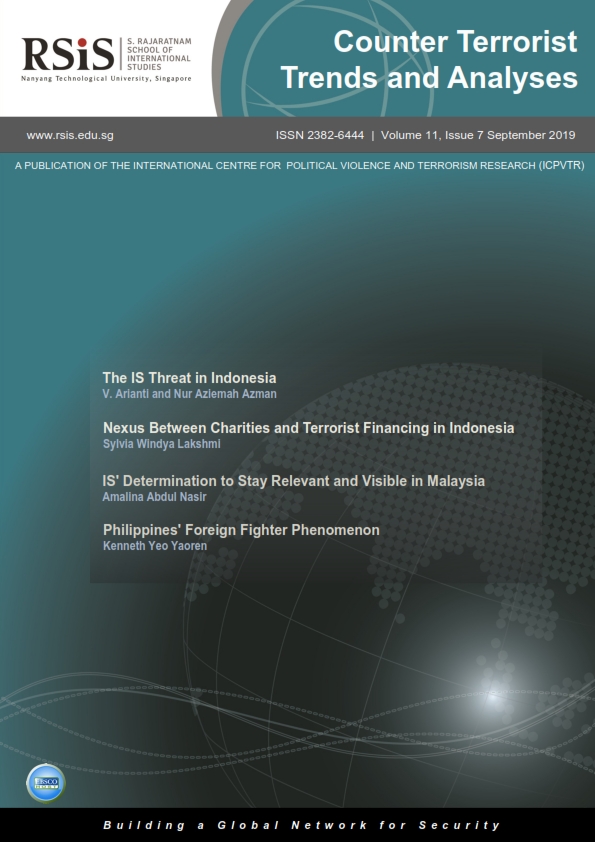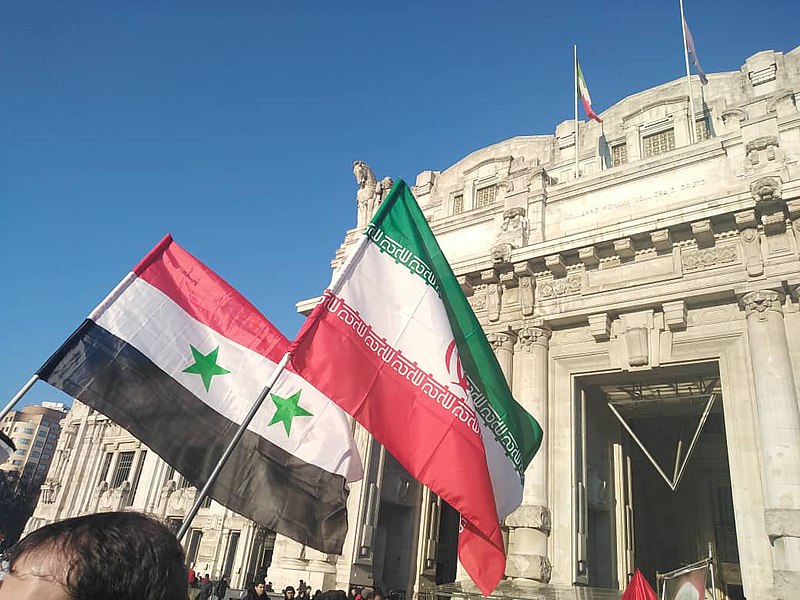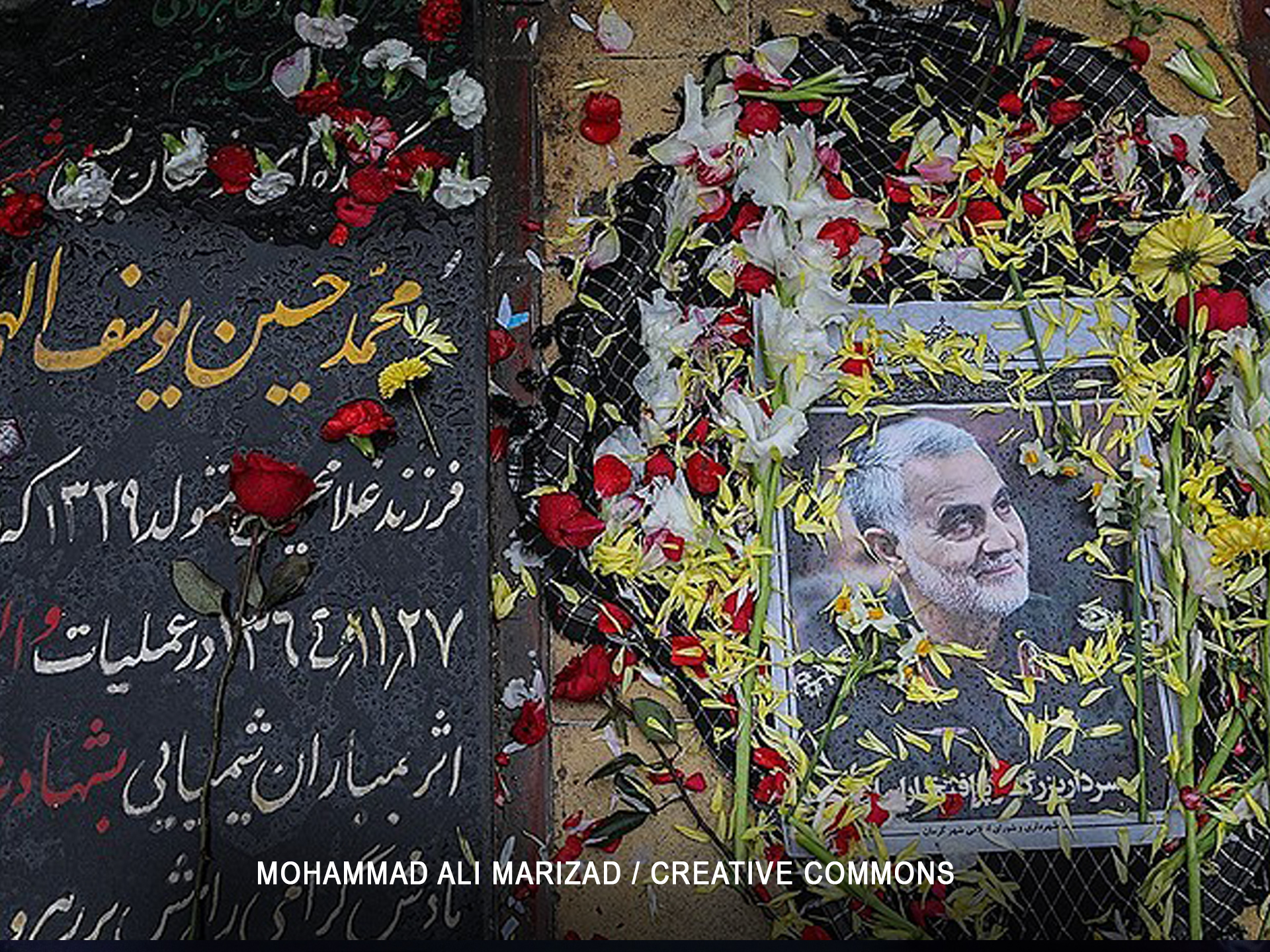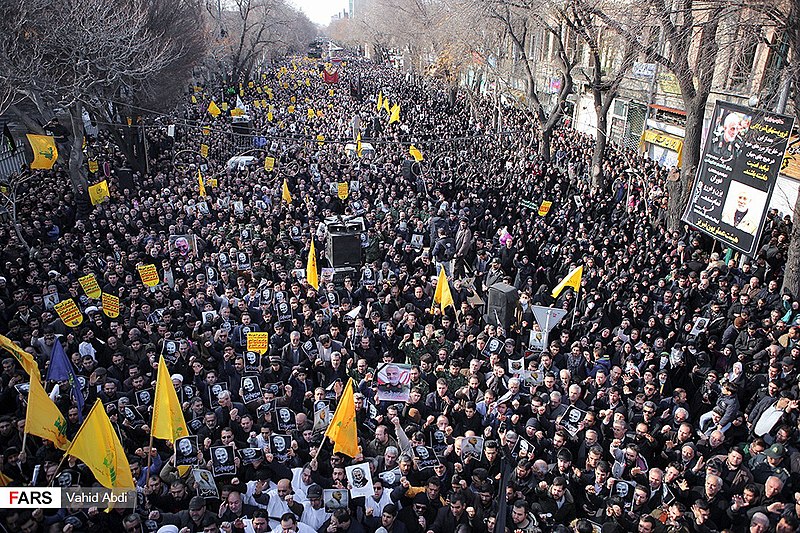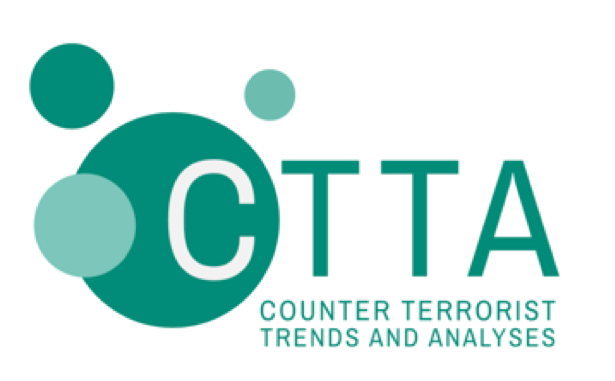
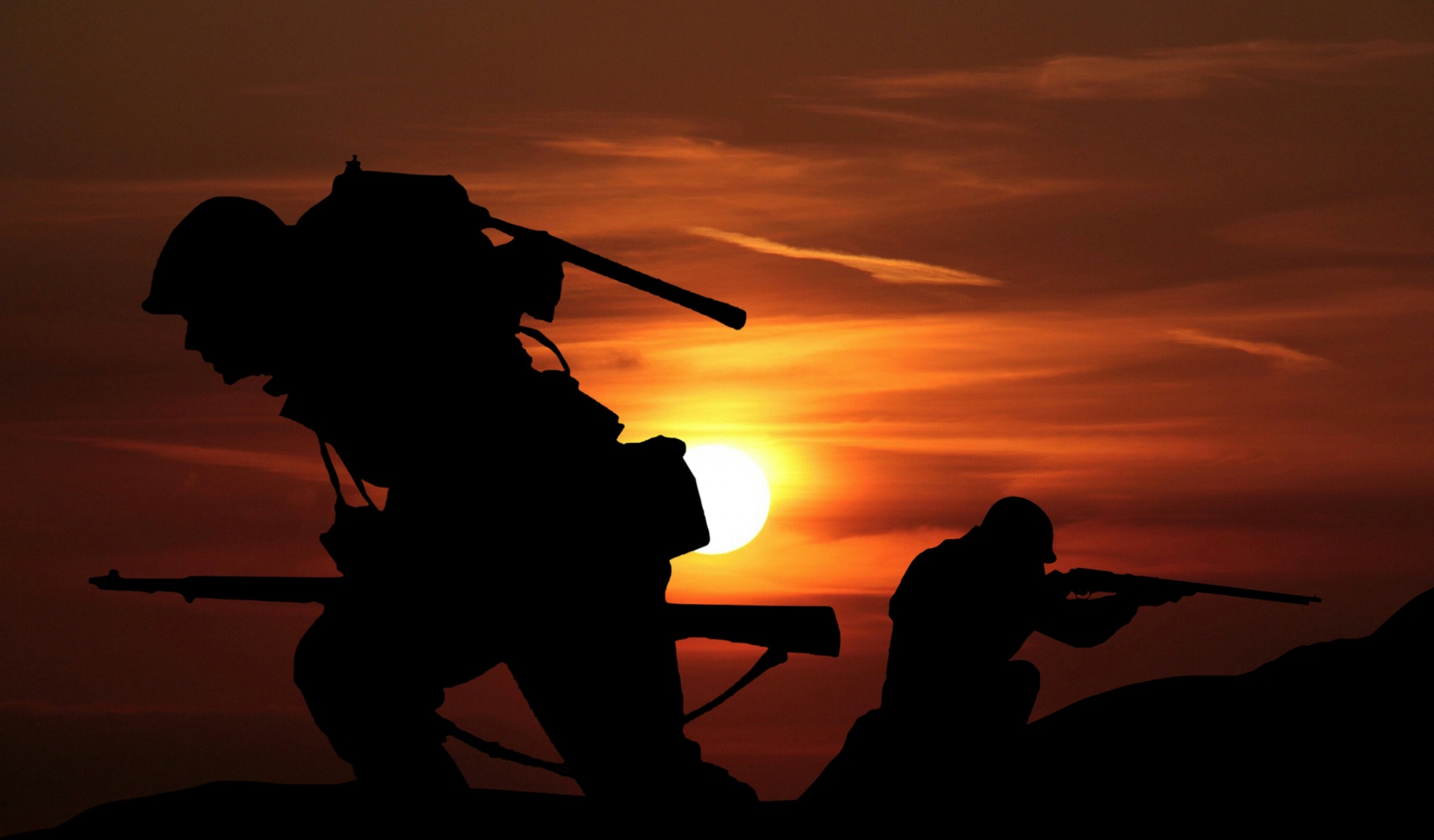
Atta Barkindo
For more than a decade now, the Nigerian government has deployed military offensives against Boko Haram. Yet, the militant group has become more sophisticated, daring and vicious, because the Sahel provides a fertile ground for global jihadist groups to establish networks. It is necessary for relevant governments to address the socio-economic conditions of the Sahel to deal with the growing jihadist threats in the region.
Atta Barkindo
For more than a decade now, the Nigerian government has deployed military offensives against Boko Haram. Yet, the militant group has become more sophisticated, daring and vicious, because the Sahel provides a fertile ground for global jihadist groups to establish networks. It is necessary for relevant governments to address the socio-economic conditions of the Sahel to deal with the growing jihadist threats in the region.
Introduction
For some time now, many scholars such as Kyari and Thurston, have refuted the links between Boko Haram and any foreign militant group.[1] They argue that Boko Haram attacks are orchestrated by a rag-tag group of naïve Islamic activists, motivated by local issues of economic deprivation, poor governance, stunting squalor and destitution.[2] Perouse de Montclos in particular states that Boko Haram does not need any foreign partnership to espouse moral revulsion against the Nigerian government. Boko Haram’s possible links to groups such as Al-Qaeda in the Islamic Maghreb (AQIM) are the product of speculations in the field of security studies, rather than evidence-based research.[3]
However, in years preceding Boko Haram’s rise, foreign jihadist groups have already shown interest in Africa. On February 12, 2007, jihadi forums, circulated an article titled ‘‘al-Qaeda Organization and the African Continent: Past, Present and Future.’’[4] The article highlights Africa’s importance to Al-Qaeda (AQ)’s view of global jihadism and outlines the group’s strategy for expanding in Africa. Similarly, in November 2015, the Islamic State (IS) dedicated the 8th issue of its monthly English-language magazine, Dabiq, to Africa, titled ‘‘Sharia alone will rule Africa.’’[5] Contemporary narratives indicate that among other factors, the rise of AQ and IS is linked to Western intervention in Afghanistan and Iraq. Even though Africa is not part of Europe or America, it remains a territory of interest to both jihadist groups.
The sophistication in attacks exhibited by jihadist groups across the Sahel, particularly in Nigeria and the Lake Chad region, demonstrates the possible links between them and AQ as well as IS. Additionally, the tactical professionalism and operational strategies deployed in handling weapons, intelligence gathering and dissemination of ideological propaganda underscore that these attacks are not just conducted by local and naïve Islamic activists, but by trained militants with focused goals and vision.[6]
This article explores the historical relationship between Boko Haram and the global militant groups as one of the reasons for the former’s expanding reach within the region. This article has three sections. In the first section, the article provides the context of the Sahel and nature of jihadist violence therein. Then, it analyses the historical relationship between Boko Haram and groups like IS and AQ. Finally, the study highlights the emerging security threats in the Sahel and future prospects of jihadists groups in the region.
Context and Nature of Islamist Violence in the Sahel
For many years now, violent extremism has been spreading in Africa, including the Sahel region: a massive, semi-arid geographical region, difficult to define. It is perceived as a bridge that divides the Arab Maghreb from black Sub-Saharan Africa. A common religion (Islam), Arabic language and colonial heritage (French or Britain) also unite the people of the region.[7] Moreover, human deprivation and insecurity are pervasive coupled with a lack of political and economic rights, encouraging local communities in the Sahel to turn to crime, political violence and terrorism.[8]
Recently, terrorist activities in the Sahel are further reinforced by the expanding influence of AQ and IS. The two rival global militant groups have co-opted local jihadist groups to control territories, and propagate their violent extremist ideologies. Several terrorist groups currently operate in the Sahel, and principal among them is AQIM and IS. AQIM emerged in the 1990s, operating then as the Salafist Group for Preaching and Combat, a faction of the Algerian-based Groupe Islamique Armé. In 2006, AQIM embraced the AQ brand.[9] IS also operates in the Sahel through its affiliate, Islamic State in the Greater Sahara (ISGS). It operates in Mali, Niger and Burkina Faso.[10]
In Nigeria, Médecins Sans Frontières estimates that since 2009, Boko Haram, later, Islamic State West Africa Province (ISWAP), an affiliate of IS, is said to have killed about 35,000 people and displaced around 1.8 million. About 230,000 people have fled to neighbouring Niger, Chad and Cameroon.[11] The group has used more than 200 female suicide bombers, killing over 1,000 people across Nigeria, Niger, Chad and Cameroon.[12] Niger faces increasing Boko Haram infiltrations and attacks, particularly in the southern Diffa region, which borders northeast Nigeria. As Niger attempts to deal with Boko Haram fighters, it is also tackling AQIM penetration in the north and west of the country. This means that Niger is facing an onslaught from two jihadist groups. In Mali, Tuareg nomads, having fought for Muammar Gaddafi in Libya, returned in November 2011 with sophisticated weaponry to demand for the state of Azawad.[13] The rebellion was initially led by the National Movement for the Liberation of Azawad (MNLA). In 2012, MNLA aligned with AQ, the Movement for Unity and Jihad in West Africa and Ansar Dine to demand for Islamic governance.[14]
History of the Relationship between Boko Haram and Jihadist Groups
Boko Haram’s evolution to one of the most brutal terrorist organisations is linked to its relationship both with AQ and IS in the Sahel. Evidence for this includes a series of communication from 2009 to 2011 between AQIM and Boko Haram leaders, and correspondence from 2014 to date between IS, Boko Haram and later ISWAP.[15]
Boko Haram which started in the early 1990s, began its confrontation against the Nigerian state in 2009 when its erstwhile leader, Muhammad Yusuf, was killed by Nigerian security.[16]
Boko Haram had initially established a relationship with AQ.[17] However, by 2014, its leader Abubakar Shekau pledged allegiance to IS and declared a self-styled Islamic state in an area around the size of Belgium.[18] Shekau’s declaration of a so-called caliphate might have damaged Boko Haram’s relationship with AQ, because it went against the latter’s central principle of declaring a particular territory as an Islamic state. Such a declaration was likely to attract media attention, as well as increased counter-insurgency operations against the group.[19]
As such, Boko Haram turned its attention to cultivating a new relationship with IS. In early 2014, Tunisian IS radical Abu Malik Shayba al-Hamad had forged links between Boko Haram and IS. Abu Malik was a former member of Ansar al-Sharia Tunisia who defected to IS and subsequently administered the Africa Media outlet that published Boko Haram’s Daily Communiques from November 2014, to February 2015.[20] In February 2015, a Boko Haram Consultative Council meeting was held where a pledge of allegiance to IS was agreed,[21] and in March 2015 Shekau pledged allegiance to the IS. IS then rebranded Boko Haram as ISWAP.[22]
Under Shekau’s successor Abu Mus`ab al-Barnawi,[23] the ties between IS and ISWAP flourished.[24] The International Crisis Group reported in May 2019 that an unspecified number of Nigerian and West African militants who fought abroad for IS have reportedly returned to join ISWAP.[25] Additionally, money flows from the Middle East to ISWAP (which stopped at some point in 2017 as IS came under severe pressure) have resumed. It is therefore reasonable to suggest that IS has contributed to the operational evolution that military experts have observed in ISWAP, from the use of improvised explosives to new infantry tactics and quartermaster techniques.[26] Thus, this budding relationship and the displacement of IS from most parts of Iraq and Syria have combined to facilitate the expansion of terror groups in the Sahel, particularly in Nigeria and Burkina Faso.[27]
Emerging Threats of Insecurity in the Sahel and the Underlying Factors
With the expanding influence of AQ and IS, the level of violence in the Sahel, especially in Burkina Faso and Nigeria, has substantially increased in the last two years. For instance, in April 2018, ISGS fighters murdered Hamidou Koundaba, the mayor of the Burkinabe Koutougou commune, in front of his home, for collaborating with the Burkina Faso army and western forces.[28] This was later followed by the abduction and execution of Hamada Ag Mohamed, a local leader in the Malian town Tin Habou, in May 2018.[29] The incident followed two other executions of two Malian army leaders and GATIA forces in the previous month.[30] In Nigeria, ISWAP has grown into a powerful, well organised and equipped militant force. From its ‘proto-state’ base along Lake Chad, it exerts influence across Northern and Central Borno and down through the Eastern part of Yobe State. In areas under its control and/or influence, it reportedly facilitates trade and levies taxes, provides security for herders, collects taxes and patrols the roads.[31]
ISWAP presents Shekau, who heads a rival faction, to local inhabitants as untrustworthy, dictatorial and obsessed with the property of innocent civilians, the spoils of war including money, and captive women.[32] ISWAP’s closer relationship with IS has made the group more brutal, leading to secretive killings of disloyal members, gruesome beheadings and public executions of hostages, using the videos for propaganda. For example, in January 2020, ISWAP kidnapped and executed Pastor Lawan Andimi, the Chairman of the Christian Association of Nigeria, Michika Local Government Area, northern Adamawa state. This public execution was followed by the abduction and execution of another Christian student, Ropyil Daciya Dalep, by an 8-year old ISWAP minor.[33]
Several factors make Sahel attractive for terrorist groups. First, what drives the Sahel is trade. A caravan trade route, an artery pumping life through the region, has long facilitated the movement of goods and people between the Mediterranean and West Africa.[34] Today, technological advances – GPS, satellite phones, and four-wheel drive vehicles – facilitate desert travel like never before, as it has become possible to drive from Kidal in Mali to Tamanrasset in Algeria in about a day.[35] Such a change has been enormously beneficial to terrorist groups who are mostly involved in organised criminal enterprises.
Second, they also exploit the weak state system, the vastness of the Sahara, the ungoverned spaces and the fact it is humanly difficult to man such vast territory physically. For example, in the Lake Chad region, the militant groups exploit these gaps to increase their criminal activities, earn money and sustain their jihadist agenda.[36] Because, where there is environmental degradation, or acute scarcity of vital resources, war may follow.[37] According to Brisard, the key to AQIM’s recent transformation in the Sahel is its commitment to criminal activities, such as cigarette smuggling, human trafficking, kidnapping, and the narcotics trade. In the past five years alone, it has been estimated that AQIM has raked in millions of dollars from its kidnapping for ransom operations.[38] One explanation for the allure of this type of criminal activity stems from the fact that parts of Mali, Niger, Mauritania, and Algeria are relatively secure areas to hold kidnapped individuals because of their vastness, and the influence of terrorist groups.[39] Additionally, cigarette smuggling has become lucrative.[40] Approximately 60 billion of the 400 billion cigarettes that Africans smoke annually are bought on the black market. The illicit trade in cigarettes is worth approximately $1 billion annually, a large sum for an impoverished region.[41] Latin American drug cartels are also alleged to use West Africa as a transit point to export cocaine to Europe and the United States. The key transit countries for this illicit trade are Ghana, Guinea-Bissau, Mauritania, Senegal, and Mali.[42]
Third is the manipulation of Islam and its religious texts. Islam, the main religion in the region, was adopted centuries ago and adapted to Sahelian cultural practices over time. In the last few decades, jihadist groups from the Middle East and South Asia have also penetrated the region, providing healthcare, education, and food.[43] In return, these groups proselytise.[44] The infusion of a Middle East/South Asian Islam has facilitated the emergence of two distinct identities: secularists and Islamists. The Islamists seek implementation of a strict Islamic theocracy, even though this would be alien to the region.[45] The utter failure of government and the absence of any meaningful infrastructure in the Sahel has not only turned the area into a graveyard of dry bones and hopelessness, but has also forced many young people to turn to this emerging brand of Islamism and be supportive of jihadist activities.[46]
Finally, the activities of terror groups in the Sahel have been made worse by the consequences of aggressive desertification and environmental degradation. This has heightened contestation between herders and farmers in the region, creating an environment conducive to criminal activities and terrorism.[47] Environmental degradation and substantial loss of land-use resources have combined to escalate the conflict. Herdsmen and terrorists have coalesced to perpetrate atrocities in the name of Islam. Today, leaders of terrorist organisations across Africa, have nomadic backgrounds. For instance, Iyad Ag Ghaly, the so-called “Lion of the Desert” and chief of Ansaru al-Dine, and Mokhtar Belmokhtar, the one-eyed former AQIM commander, are all former nomads.[48] Again, herdsmen make up a substantial number of the fighters belonging to Islamic groups in Mali, Niger, Chad and other parts of Africa. This is reinforced by the migration of other herdsmen from across the Sahelian region as well as the contemporary rise in the activities of terrorist organisations.
Conclusion
With recent activities of Islamist groups in the Sahel, and the worsening humanitarian, environmental and security situation, these jihadist groups are likely to grow and expand. There is likely to be closer collaboration between and among terrorist groups in the Sahel. Furthermore, the partnership between terrorist groups and criminal organisations may intensify that will and further consolidate the activities of the terrorist groups, giving them the leeway for recruitment, mobilisation and community engagement to win the hearts and minds of local inhabitants. As such, there is a need for greater collaboration regionally to combat these terrorist organisations. The governments of Sahel and the Lake Chad border region should design a comprehensive security approach to tackle the activities of the terrorists. This should be accompanied by counterinsurgency and counter terrorism measures that dwell on the non-kinetic approach. The countries involved should develop a common strategy on prevention and countering violent extremism taking into consideration the perspectives of local communities and aligning with international best practices.
Atta Barkindo is the Director of The Kukah Centre and Head of Secretariat, Nigerian National Peace Committee, Abuja-Nigeria. He is a Priest of the Catholic Diocese of Yola, Adamawa State. He is also a member of the Board of Trustees (BoT), Africa Research Institute, London. He can be reached at [email protected].
References
[1] Kyari Muhammad, “The Message and Methods of Boko Haram,” in Islamism, Politics, Security and the State in Nigeria, March-Antoine Perouse De Montclose, (ed.), (Ibadan: French Institute for Research in Africa, 2014).
[2] Manasseh Igyuh, ‘‘Concept Note for Achieving Sustainable Peace in Northern Nigeria,’’ Unpublished Document, p. 1.
[3] March-Antoine Perouse, ‘‘A Sectarian Jihad in Nigeria: The Case of Boko Haram,’’ Small Wars and Insurgencies, Vol. 27, No. 5 (September 2016), pp.878-895.
[4]‘‘Middle East Forum for vital intelligence on Islamic terrorist organisations,’’ Jihadi Forums, October 4, 2018, http://jihadintel.meforum.org/identifiers/25/jihadist-media-forums.
[5] ‘‘Sharia Alone will Rule Africa,’’ Dabiq Issue 8, March 31, 2015, pp. 14-16, http://counterjihadreport.com/2015/03/31/islamic-states-dabiq-8-focuses-on-unifying-ummah-criticizing-islamists/.
[6] Jacob Zenn, Atta Barkindo & Nicholas A Heras, ‘‘The Ideological Evolution of Boko Haram in Nigeria,’’ The Rusi Journal, Vol. 158, Issue, 4, (August 2013), pp.46-53.
[7] ‘‘Sahel: $1.6 Billion Appeal to Address Widespread Humanitarian Crisis,’’ United Nations Office for the Coordination of Humanitarian Affairs, June 24, 2013.
[8] Cline Lawrence, ‘‘Nomads, Islamists and Soldiers: The Struggle for Northern Mali,’’ Studies in Conflict and Terrorism, Vol. 36, No. 8, (June 2013), pp.617-634.
[9] Arieff Alexis, ‘‘Algeria: Current Issues, Congressional Research Services,’’ Washington DC: Congressional Research Services, November 18, 2013, https://fas.org/sgp/crs/row/RS21532.pdf.
[10] Nossiter Adam, “Gunman Kills Five in Restaurant in Mali,” New York Times. March 4, 2015, https://www.nytimes.com/2015/03/08/world/africa/5-killed-at-a-nightclub-attack-in-mali-capital.html.
[11] ‘‘Crisis Information on Borno and Yobe States,’’ Médecins Sans Frontières, October 29, 2019, https://www.msf.org/crisis-info-borno-and-yobe-states-august-2019.
[12] Elizabeth Pearson, ‘‘Boko Haram, the Islamic State, and the Question of the Female Suicide Bomber,” in Boko Haram Beyond the Headlines: Analyses of Africa’s Enduring Insurgency, Issue: Special Report, Jacob Zen (ed.), Combating Terrorism Centre, (May 2018), pp. 33-52, https://ctc.usma.edu/app/uploads/2018/05/Boko-Haram-Beyond-the-Headlines_Chapter-2.pdf.
[13] Cline Lawrence, ‘‘Nomads, Islamists and Soldiers: The Struggle for Northern Mali.’’
[14] Nivedita Ray, ‘‘The Rise of Islamic Terrorism in Mali,’’ Indian Council on Foreign Relations, January 6, 2016.
[15] “Letter from Abdallah Abu Zayd Abd-al-Hamid to Abu Mus’ab Abd-al-Wadud,” Bin Laden’s Bookshelf, Office of the Directorate of National Intelligence, January 19, 2017, https://www.dni.gov/files/documents/ubl2017/english/Letter%20from%20Abdallah%20Abu%20Zayd%20Abd-al-Hamid%20to%20Abu%20Mus%20ab%20Abd-al-Wadud.pdf.
[16] Jacob Zenn, ‘‘Leadership Analysis of Boko Haram and Ansaru in Nigeria,’’ CTC Sentinel, Issue 7, No. 2, (February 2014), pp.23-25, https://ctc.usma.edu/app/uploads/2014/02/CTCSentinel-Vol7Iss2.pdf.
[17] Shaykh Abu Al-Hasan Rashid, “Documents of Advice and Sharia Instruction to the Fighters in Nigeria,” April 2017, https://azelin.files.wordpress.com/2017/04/shaykh-abucc84-al-hcca3asan-rashicc84d-22sharicc84ah-advice-and-guidance-for-the-mujacc84hidicc84n-of-nigeria22.pdf.
[18] Jacob Zenn, ‘‘Boko Haram’s Conquest for the Caliphate: How Al Qaeda Helped Islamic State Acquire Territory,’’ Studies in Conflict & Terrorism, Vol. 43, Issue 2, (2020), p. 1.
[19] Fulan Nasrallah, “Nigeria SITREP (Boko Haram),” Fulan’s SITREP, September 3, 2014, https://fulansitrep.wordpress.com/2014/09/03/3rd-september-2014-nigeria-sitrep-boko-haram/.
[20] Jacob Zenn, “Wilayat West Africa Reboots for the Caliphate,” CTC Sentinel, Vol.8, Issue 8, (August 2015), pp. 10-16, https://ctc.usma.edu/wilayat-west-africa-reboots-for-the-caliphate/.
[21] “Boko Haram Communiques with African Media,” The Boko Haram Reader, February 2015, pp. 351-352, https://azelin.files.wordpress.com/2015/02/jamc481_at-ahl-al-sunnah-li-l-da_wah-wa-l-jihc481d-e2809cpast-messages-from-jamc481_at-ahl-al-sunnah-li-l-da_wah-wa-l-jihc481d-to-the-muslims22.pdf.
[22] “Baya’ to the Caliph of Muslims,” Jihad Ideology, March 7, 2015, http://jihadology.net/2015/03/07/ al-urwah-al-wuthqafoundationpresents-a-new-audio-message-from-jamaat-ahl-al-sunnah-li-ldawah-wa-l-jihadsboko-%e1%b8%a5aram-abu-bakr-shekau-bayah-jama/.
[23] ‘‘Al-Naba interview with Abu Mus`ab al-Barnawi,’’ al-Naba Issue 41.
[24] Abdulbasit Kassim, ‘‘Boko Haram’s Internal Civil War: Stealth Takfir and Jihad as Recipes for Schism,’’ Combating Terrorism Centre, May 2018, p. 20, https://ctc.usma.edu/app/uploads/2018/05/Boko-Haram-Beyond-the-Headlines_Chapter-1.pdf.
[25] ‘‘Facing the Challenge of the Islamic State in ISWAP,’’ International Crisis Group, Report N°273, May 16, 2019, p. 9,https://www.crisisgroup.org/africa/west-africa/nigeria/273-facing-challenge-islamic-state-west-africa-province.
[26] ‘‘Facing the Challenge of the Islamic State in ISWAP,’’ p. 10.
[27] Djallil Lounnas, ‘’The Transmutation of Jihadi Organisations in the Sahel and Regional Security Architecture,’’ Future Notes, No. 10, April 2018.
[28] ‘‘By Day We Fear the Army, By Night the Jihadists,” Human Rights Watch, May 21, 2018.
[29] Ibid.
[30] ‘‘Attacks claimed by the Islamic State in the Greater Sahara (ISGS),” Menastream, June 23, 2018.
[31] ‘‘Terrorist Financing in West and Central Africa,’’ FATF-GIABA-GABAC, October 2013, www.fatf-gafi.org/publications/methodsandtrends/documents/terrorist-financing-west-central-africa.html, p. 10.
[32] ‘‘Nigeria: Women and the Boko Haram Insurgency,” International Crisis Group, Report N°242, December 5, 2016.
[33] ‘‘Nigeria: Child Terrorist Executes a Christian Student,’’ Independent Catholic News, January 23, 2020.
[34] Lydon Ghislaine, ‘‘On Trans-Saharan Trails: Islamic Law, Trade Networks, and Cross-cultural Exchange,” in Nineteenth-century Western Africa, (Cambridge: Cambridge University Press, 2012).
[35] Boas Morten, “Crime, Coping, and Resistance in the Mali-Sahel Periphery,” African Security, Vol. 8, Issue 4, (December 2015), pp. 299–319.
[36] Arthur E. Neiland and I. Verinumbe, ‘‘Fisheries Development and Resource-usage Conflict: A Case Study of Deforestation Associated with the Lake Chad Fishery in Nigeria,’’ Journal of Environmental Management, Vol. 18, Issue 2, (Summer 1991), pp.185-199.
[37] Lodgaard Sverre, ‘‘Environmental Security, World Order, and Environmental Conflict Resolution,’’ Conversion and the Environment, November 24-27, 1991, p. 115-136.
[38] Brisard Jean Charles, “Terrorism Financing in North Africa,” American Center for Democracy, May 2, 2016, http://acdemocracy.org/terrorism-financing-in-north-africa/.
[39] Moore Jack, “The Lawless Hotbed of Jihadism in Tunisia’s Western Mountain,” Newsweek, March 20, 2016, http://europe.newsweek.com/hive-extremism-tunisias-lawless-terror-mountains-315550.
[40] Boas Morten, “Crime, Coping, and Resistance in the Mali-Sahel Periphery.”
[41] Doward Jamie, “How Cigarette Smuggling Fuels Africa’s Islamist Violence,” Guardian, January 27, 2013, http://www.theguardian.com/world/2013/jan/27/cigarette-smuggling-mokhtar-belmokhtar-terrorism.
[42] “The Global Initiative Against Transnational Organized Crime,” Global Initiative, May 11, 2015, http://globalinitiative.net/download/global-initiative/Libya%20Criminal.
[43] Laremont Ricardo and Hrach Gregorian, “Political Islam in West Africa and the Sahel,” Military Review, Vol. 86, Issue 1, (Jan-Feb 2006), pp.27–36, https://www.hsdl.org/?view&did=461433.
[44] Laremont Ricardo and Hrach Gregorian, “Political Islam in West Africa and the Sahel.”
[45] Kirwin Matt, “The Political & Economic Effects of Nigerian Shari’a on Southern Niger,” Review of African Political Economy, Vol.32, No. 4, (June-September 2005), pp. 407–15, https://www.jstor.org/stable/4007083?seq=1.
[46] Bishop Matthew Hassan Kukah, ‘‘Homily at the Funeral Mass of Seminarian Michael Nnadi at Good Shepherd Seminary,’’ Independent Catholic News, February 11, 2020, https://www.indcatholicnews.com/news/38936.
[47] Boyd Jean and Shagari Shehu, ‘‘The life and legacy of Shehu Uthman Dan Fodiyo,’’ (Oxford: Macmillan Publishers, 2003), pp. 1-13.
[48] Jubber Nicholas, ‘‘Mali’s Nomads: Bulwark against Jihad,” World Policy, April 2, 2016, http://www.worldpolicy.org/journal/fall2014/mali-nomads-against-jihad.



